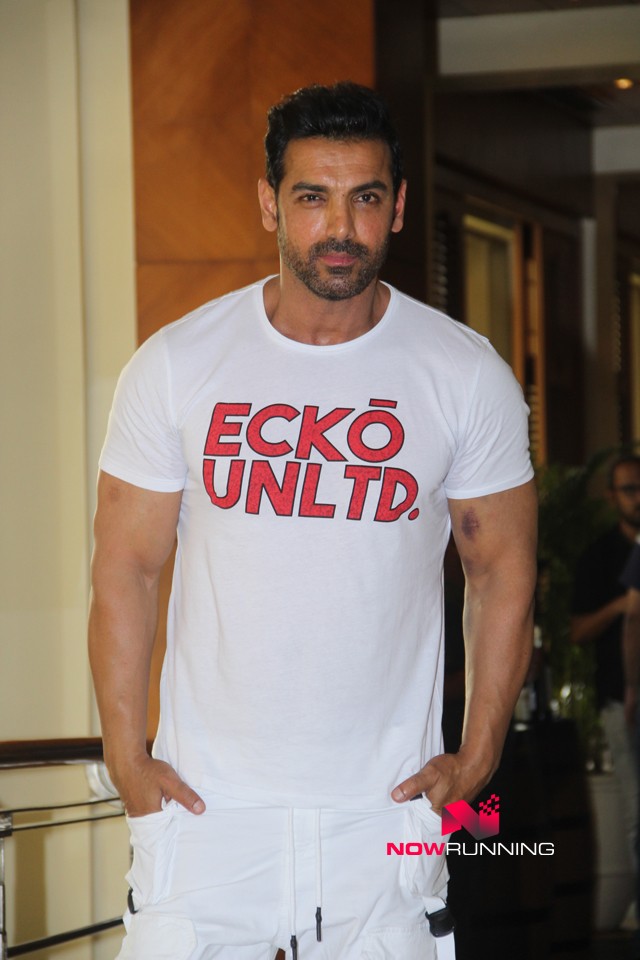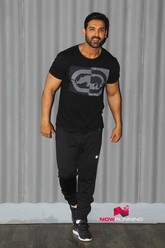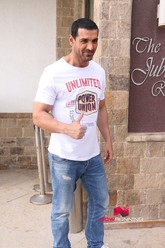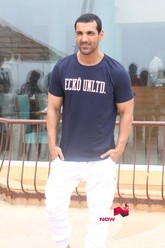
Gay talk goes mainstream with 'Dostana'
Nov 24, 2008 Robin BansalNew Delhi, Nov 24 (IANS) Out of the closet and into mainstream cinema, not as a serious statement on sexuality but as breezy comic fare - with "Dostana", homosexuality may finally have rid itself of its taboo status in Indian films.
As John Abraham and Abhishek Bachchan keep the audience in splits, it is tempting to believe that Bollywood may be ready to break away from the tried and tested. Some have hated the film, saying that it just perpetuates the gay stereotype, others have loved it.
But "Dostana" is well on its way to becoming a super hit. It has tickled the funny bone of viewers with its story about two strapping young men pretending to be gay and their friendship with their landlady Priyanka Chopra.
Parmesh Sahani, editorial director of Verve magazine, India, is upbeat about the change.
"Films like 'Dostana' are playful and funny that bring sexuality as a dinner table conversation piece. Bollywood is open to diversity in terms of subjects including sexuality and the audiences are ready to accept diversified subjects," Sahani told IANS.
"The texture of Bollywood has changed drastically over the past few years and even our society is changing. People are becoming comfortable with the fact that it's perfectly all right to love someone from the same sex."
Directed by Tarun Manuskhani, the film sees Abhishek and John's open innuendos about their same sex affinity in a rib-tickling fashion.
"We took a topic that is still considered taboo in our society and used it as the impetus for a hilarious comedy. No one's cringing at the image of Abhishek and John frolicking in the sand, and no one's walking out of cinema halls in discomfort," Karan Johar, who has produced the film, wrote on his blog mynameiskaran.com.
"Our male lead characters are playing gay to their advantage, quite the opposite of those who feel the need to stay in the closet because of the narrow-mindedness that exists in our country," added Johar.
The first Indian film to explicitly depict such an issue was Deepa Mehta's "Fire" (1996) that triggered protests by right-wing Hindu groups for its uncensored depiction of homosexuality after its release in India in 1998.
The after-effects of the controversy injected apprehensions among Indian filmmakers, who became hesitant to focus on the issue in films.
But they did not flinch from weaving gay sub-plots in the stories to evoke cheap laughter. An example is Johar's 2003 hit "Kal Ho Naa Ho" that made popular the scenes between Shah Rukh Khan and Saif Ali Khan where they were incorrectly assumed to be a gay couple.
Since then films like "Rules: Pyaar Ka Superhit Formula" (2003), "Girlfriend" (2004), "Kalyug" (2005), "Page 3" (2005), "Honeymoon Travels Pvt. Ltd." (2007) and "Fashion" (2008) dealt with the issue in minimalist appeal with the exception of Onir's "My Brother Nikhil" (2006) where a family comes to terms with their son being gay and HIV-positive.
Vikram, an activist with the 'Gay Bombay' group, said: "The film industry is a commercial entity, it has to show something that sells. But it is for the first time that Bollywood is showing two people openly accepting that they are gay and that too in a way that says it is not bad to be a gay."
However, homosexuality still remains taboo and an offence in India with punishment up to 10 years' imprisonment. Section 377 of the Indian Penal Code treats sexual relations among people of the same gender as "unnatural" and a criminal act.
Ad-guru Prahlad Kakkar thinks that though the movie has opened barriers for other filmmakers with its bold attempt, it is very unlikely that it will act as a catalyst in society's acceptance of gays.
" 'Dostana' has dealt with the gay issue in a funny way without making fun of gays but of the characters. But, suddenly after the movie, if people think that gays will be acceptable in Indian society, that's not true because middle-class people are horrified of such issues," he said.
Some of the other critically acclaimed films made on the gay theme are director Sridhar Rangayan's "Yours Emotionally" and "The Pink Mirror", "Happy Hookers" by Ashish Sawhny and Manan Singh Katohora's "When Kiran Met Karen".
Click the Movie button below for more info:
Dostana
John Abraham Pictures
COMMENTS
More News
















